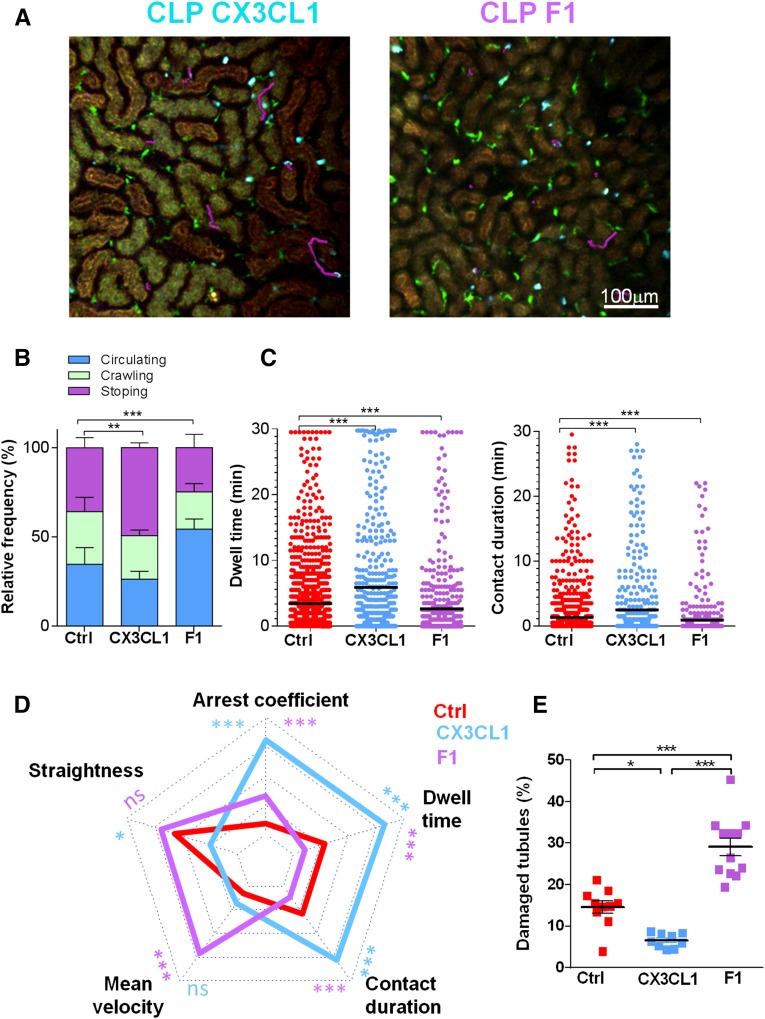Figure 4.
CX3CR1 activation controls Ly6Chigh monocyte adherence and the outcome of CLP-mediated sepsis. (A) Two-photon laser scanning microscopic images with overlay of monocyte migratory tracks (pink) in kidney cortex of MacBlue×Cx3cr1gfp/+ mice treated with CX3CL1 or F1, 6 hours after CLP. ECFP signals are in cyan, GFP signals are in green, and renal tubules are autofluorescent. (B) Relative frequency of the three behaviors and (C) dwell time and contact duration in MacBlue×Cx3cr1gfp/+ untreated (red), treated with CX3CL1 (blue), or treated with F1 (purple). Bars represent mean±SEM (n=3 mice per group from independent experiments; ANOVA with Bonferroni adjustment was used; **P<0.01; ***P<0.001). (D) Radar chart representation shows ECFP+ cell dynamic signatures in the different experimental conditions. Mean values are presented within the 95% confidence interval of the measured value scale for each parameter. For all two-photon experiments (n=3 mice per group from independent experiments; Mann-Whitney test was used; *P<0.05; ***P<0.001). (E) Quantification of kidney histologic lesions 24 hours after CLP in control, CX3CL1, and F1-treated mice. Bars represent mean±SD (n=10 control, 12 F1, and 9 CX3CL1, from at least two independent experiments; ANOVA with Bonferroni adjustment was used; *P<0.05; **P<0.01; ***P<0.001). (See also Supplemental Movies 6 and 7.)

